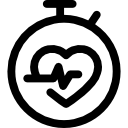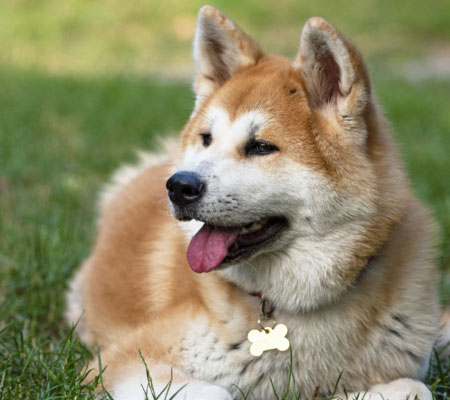The Andalusian Hound is said to have derived from
the European hunting dog and originated in the Andalusian area of southern
Spain. There was some conjecture that they were one of the old breeds
represented on cave paintings thousands of years ago in the Iberian Peninsula,
but subsequent DNA investigations have disproved this hypothesis.
This breed, also known as the Podenco Andaluz,
was first formally recognised in Spain in 1990, when a breed organisation was
formed. The Andalusian Hound is not well recognised outside of its home country
due to its lack of distinctive unique qualities and the similarities it shares
with other canine breeds, particularly the Portuguese Podengo.
Their senses of sight, hearing, and smell have
all been sharply honed through the years, and they have the capacity to
withstand the hot and dry circumstances of the desert region from whence they
came. They're recognised for being meticulous and successful hunters. The
smaller Andalusian hounds are employed to hunt hare or rabbits, whilst the
bigger hounds may hunt wild boar. They'll usually hunt in groups.
Andalusian Hound Highlights
Breed Size
Medium
Nature
Gentle, Friendly, Playful, Outgoing, Willful
Energy Level
Active
Intelligence
High
Barking Level
When Necessary
Coat Length
Long, Medium
Breed Group
Hound
Droll Amount
Low
Good with
Familes, Children, Dog
Feed Level
Medium, High
Colour Type
cinnamon and white
Other Facts
Excellent sight, hearing, and sense of smell
Dog History
Other Mediterranean breeds, such as the
Portuguese Podengo and the Ibizan Hound, are strikingly similar to the
Andalusian Hound. Their physique should be well-muscled and proportioned, and
they should stand on straight, slim legs. They'll have a long face and a
pointed muzzle. Their huge, upright ears, which will take up the majority of
the area above their heads, are their most distinguishing trait. Of course,
these ears will come in handy while the hounds are hunting over wide, desolate
terrains, listening for indications of life.
The Andalusian Hound, like other Mediterranean
hounds, comes in three sizes: little (talla chica), medium (talla mediana), and
large (talla grande), and these sizes should not be mixed.
The tall variety will have a height of 53 to 64
cm and a weight of 21 to 33 kg. The medium hound will stand between 42 and 53
centimetres tall and weigh between 10 and 22 kilogrammes. The smallest of the
Andalusian hounds is 32 to 42 centimetres long and weighs roughly 8 kg.
It's worth noting that the'medium' Andalusian
Hound also comes in a dwarf form. This dog, sometimes known as the Maneto,
suffers from achondroplasia and hence has small and compact limbs. This dog is
widely employed to hunt tiny animals, despite (or possibly because of) its
dwarfism, and is recognised for being a nice family companion. It is
affectionately known as 'The Dachshund Podenco.'
Andalusian Hounds come in three different sizes,
as well as three different coat varieties. Smooth, wirehair, and longhair are
some of the options. Because of the wide range of acceptable heights and coat
patterns, there are theoretically nine different types of Andalusian Hounds!
They should have a white, cinammon, or a blend of the two colours coat with no
undercoat.
18-22 inch 8-14 kg 10-13 year
Height

Weight

Life Span
Health and Care
The Andalusian Hound is not known to have any
recognised health problems. While this may be due in part to the hardiest dogs'
natural survival in harsh environments and the general healthiness enjoyed by
most hunting hounds, it is also likely that the health conditions experienced
by this breed are not yet widely known or publicised due to poor record keeping
and a lack of relevant studies.
However, all dogs might develop a range of health
problems during the course of their lives, and just because they don't have a
propensity to a disease doesn't indicate they'll have a disease-free life.
Routine health checkups at a veterinarian facility are strongly advised, as are
immunizations and parasite prevention for all pets. On average, life span of an
Andalusian Hound is typically between 10 and 12 years.
Dog Breed Care Tips and
Important Instructions
The sort of Andalusian Hound you have is the first item
to consider while caring for one.A little Andalusian Hound has different
demands than a huge Andalusian Hound. Regardless of their size, they all
require exercise.They must eat as well, and their diet must be appropriate for
their size. Remember to teach them, groom them on a regular basis, and keep their
health in check.
- Because they come in a variety of sizes, it's difficult
to create a feeding guideline that covers all of their needs.
- We give some recommendations, but for more information,
speak with a veterinarian.
- To flourish, all Andalusian Hound breeds require a
sufficient amount of protein. Protein is also beneficial to people of all ages.
- Puppies require protein to develop, adults require
protein to maintain their health, and elderly require protein to prevent
degeneration.
- The tiny and medium Andalusian Hounds require
high-quality dry food, while the giant ones require a diet tailored to their
size.
- If you feed this dog breed too much food and don't
exercise them enough, they will get fat. It's important to strike a balance
between eating and exercising.
- Using a feeding plan is a smart method to keep track of
how much you eat. This eliminates free feeding and teaches your dog to only
anticipate food at a specific time.
Feeding
The small and medium breeds can both be fed high-quality
dry meals intended for small- or medium-breed dogs, but the big breed should be
fed a large-breed-specific recipe. The Andalusian Hound may benefit from an
active or working breed formula because it is a hunting breed with great
stamina.
Fun Facts
- The Andalusian Hound comes in three sizes
- They have strong senses
- They originated from Spain
- They are not recognised outside Spain
- They are similar to some other dog breeds
Home Training Tips and General
Information
- Praise and positive reinforcement are extremely
beneficial and necessary while teaching your Andalusian Hound puppy.
- Never scream at or reprimand your young puppy for
not listening - positive reinforcement is the most effective way to train your
Andalusian Hound.
- nstead of patting your Andalusian Hound on the top
of their head or back, give them a pat beneath their chin or chest since it is
more compassionate for them.
- You should not train your Andalusian Hound in
extended periods. It is more efficient to train them throughout the day in
short but consistent sessions. It is recommended that an Andalusian Hound be
trained 3-5 times a day for 5-minute sessions. This guarantees you are getting
their complete attention.
- Reward your dog with a pet dog reward after they
have successfully completed what you have requested of them.
- Many Andalusian Hound owners make the mistake of
allowing their puppy to perform activities at an early age that they would not
want them to do later (e.g. laying on furnishings). Allowing them to get into
this pattern will make it extremely difficult to modify your dog's behaviour in
the future.
- Puppies for an Andalusian Hound should begin
training at the age of eight weeks, and they usually reach full learning
ability between eight and twelve weeks.
- Your intonation is your most valuable training
tool; while clapping, use a happy tone, and when saying "No," use a
stern tone (but not shouting).
- Take your Andalusian Hound puppy out regularly
- Learn the indications your Andalusian Hound has
to go
- Take your Andalusian Hound to the same spot each
time
- Socialize your Andalusian Hound at a young age
- Neuter your Andalusian Hound
- Be aware of your Andalusian Hounds body language
- Don’t shout back
- Teach your Andalusian Hound to understand the
word “Quiet”
- A tired Andalusian Hound is a quiet Andalusian
Hound
FAQS
|
What should I be aware of when purchasing a hound? |
|
The dog's attitude is often loyal as well as ferociously fearless. They
make excellent hunting dogs and also serve as protection dogs. Hounds are
generally amicable to people, and their intellect ensures that they are
always alert of any danger. |
|
What is the appearance of an Andalusian dog? |
|
Other Mediterranean dog breeds, such as the Portuguese Podengo and the
Ibizan Hound, are very similar to the Andalusian Hound. The body of the
Andalusian Hounds should be well-muscled and proportioned, with straight,
slim legs. They have a long face and a pointed muzzle. |
|
Is it simple to train hound dogs? |
|
Hounds are known for their independence and will seek out any opportunity
to chase a scent or moving animal. As a result, hounds are sometimes seen as
headstrong and difficult to train. |
|
Is it true that hounds shed? |
|
To be absolutely honest, no matter how hard you try, basset hounds will
shed to some extent. It's frequently a seasonal phenomenon. Dogs shed
naturally in the spring and summer to cool off. Allow your dog to wander
outside whenever feasible, especially during hot weather. |
|
Do hounds have a lot of barking? |
|
If your hound is bored, he may bark or bay excessively, so whether you
keep him occupied by using his ancestral talents or involving him in play and
domestic tasks, he must be kept active. Several of the hounds are redundant
barkers. |
Andalusian Hound Unique Name
| Male Name | Female Name |
|---|---|
| Billy | Ariel |
| Cain | Bella |
| Finn | Betty |
| Harley | Baron |
| Huck | Chanel |
| Jack | Dana |
| Kobe | Georgia |
| Louie | Grace |
| Morrisc | Greta |
| Spike | Hazel |
| Storm | Lexi |
| Tripp | Mimi |
| Tyson | Rose |
| Yukon | Sammie |
| Wagner | Sophia |
| Bailey | Sophie |
| pencer | Buttons |
| Troy | Cassis |
| Violet | Kerry |
| Whiskers | Charlie |





